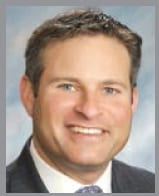Unlocking the Urgent – Art of Cura Personalis
From the perspective of clinical bioethics, the practice of ‘cura personalis,’ or ‘care for the whole person,’ can feel like a lost art in the dizzying pace of modern medicine. The unintentional moral failure of healthcare providers, and newly-minted physicians in particular, to successfully care for the holistic needs of patients often manifests in the omission of probing biographical questions that help clarify vital biological decisions.
On a rainy July morning, I visited Mr. R., an impressively intelligent and introspective 90-year-old grandfather of 12 who had been hospitalized with numerous co-morbidities for the past week. Huddled in a semi-circle at the foot of his bed, I watched Mr. R.’s clinicians introduce themselves, inform him that they would deliberate about his case in medical jargon first, and then explain the course of action they “decided on” (strike one) in terms he “could actually understand” (strike two).
Strike three came shortly thereafter. The first clinician began the conversation by addressing Mr. R. by first name. Mr. R., now visibly irritated, fired back: “how the hell old are you, anyway? You’re my physician, not my friend. Call me ‘Mr. R.’ and I’ll call you ‘Doctor.’”
Against his better judgment, the resident continued to unveil the “decided-on” treatment plan: “Mr. R., we are going to operate on your bladder today, which we think will fix the problem with your kidneys, too. After that…”
Unsurprisingly, Mr. R. wasn’t having it. “Slow down, chief! You’re telling me what I need to do. Don’t you get it? I don’t need to do anything at all. You’re talking at me as if I’m not here. Ask me, damnit! Present me with my options, and ask me what I’m willing to do to treat my problem.”
Noticing this unfortunate exchange, I also witnessed with pride the compassionate apology of the resident to Mr. R. for “doing everything wrong” in the prior interaction. He assured Mr. R. that his care — his wishes, his values, his biography — were of utmost importance. Mr. R. broke into tears, asking everyone to leave the room but flagging me to stay behind.
As I reached across the ivory hospital bed to place my hand on his shoulder, Mr. R. told me that his trust in the medical profession was already weak, that he “sat back” while it failed his wife, and that this was his breaking point. “How can I trust people who don’t ask me what I value? I’m not just a house of biological problems. I’m a person, and, believe it or not, I’m afraid to die. What if I’m never able to play with my grandchildren again? How could that be a life worth living?” I assured Mr. R. that I would be his advocate, that this was his care, and that he was in control.
At his request, I visited Mr. R. twice a day in the week leading up to the surgery to which he would finally, albeit reluctantly, consent. “What’s the hardest part about today?” I often asked him.
His replies were remarkably consistent. “That original encounter. It still bothers me. That whole being ignored while being ‘cared for’ part. I hated that.” Like all patients entrusted to the clinical solicitude of healthcare providers, Mr. R. needed to be seen and to be heard. To be affirmed. To have his thoughts count. He wanted a say and some control back in his life. He wanted his person, not merely his body, to be cared for.
Mr. R.’s case is tragically common. If nothing else, it exemplifies the urgent need for clinicians, both veterans and rookies alike, to vivify their commitment to the cura personalis — to provide individualized attention to the needs of patients, distinct respect for their unique circumstances and concerns, and an appropriate appreciation of their particular gifts and insights.
If it is fundamentally necessary to understand the narrative histories of patients in order to correctly identify the appropriate medical courses of action, then the cura personalis serves the means by which caregivers can understand how to pair the best of medical expertise with the best of personal values.


Comments are closed.